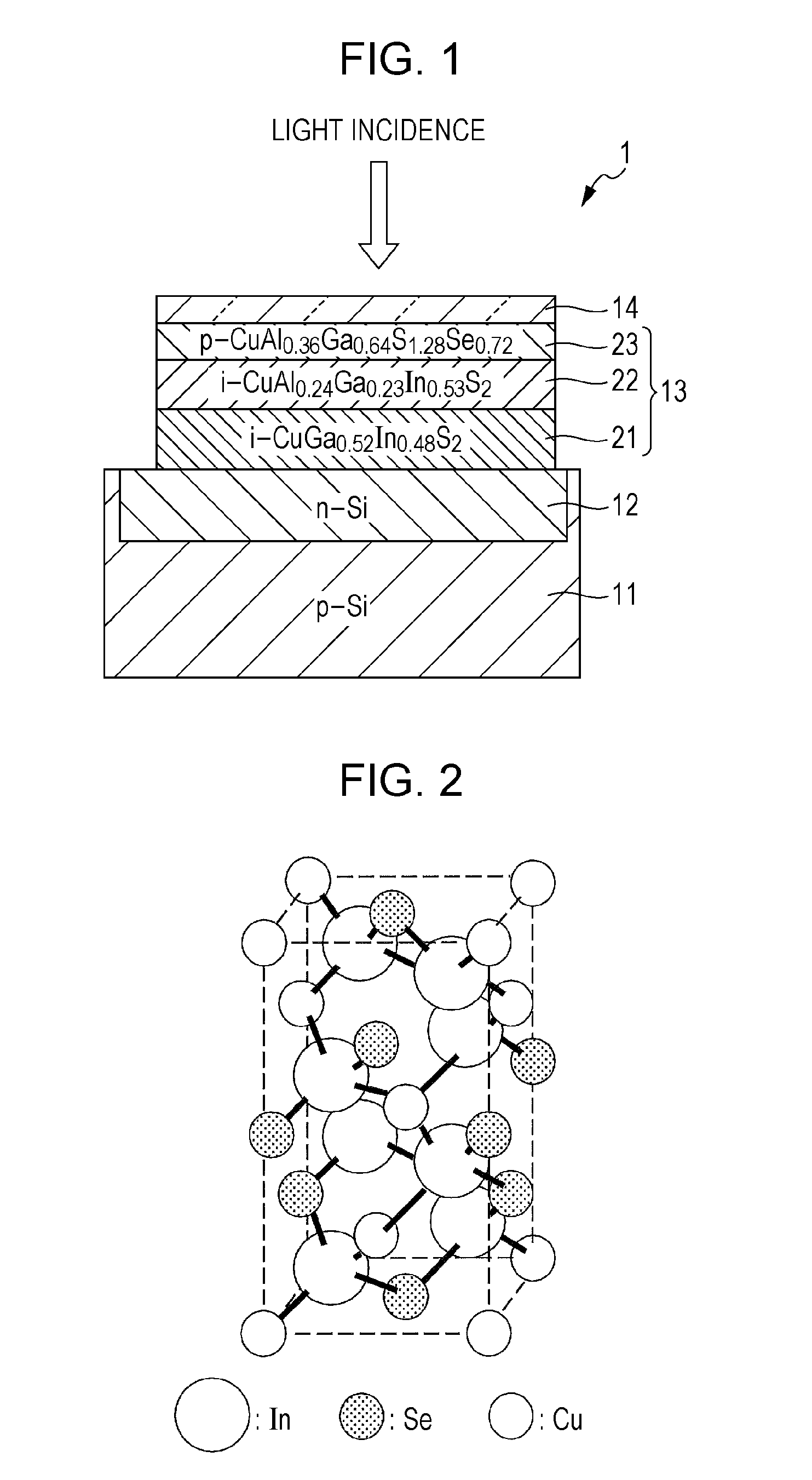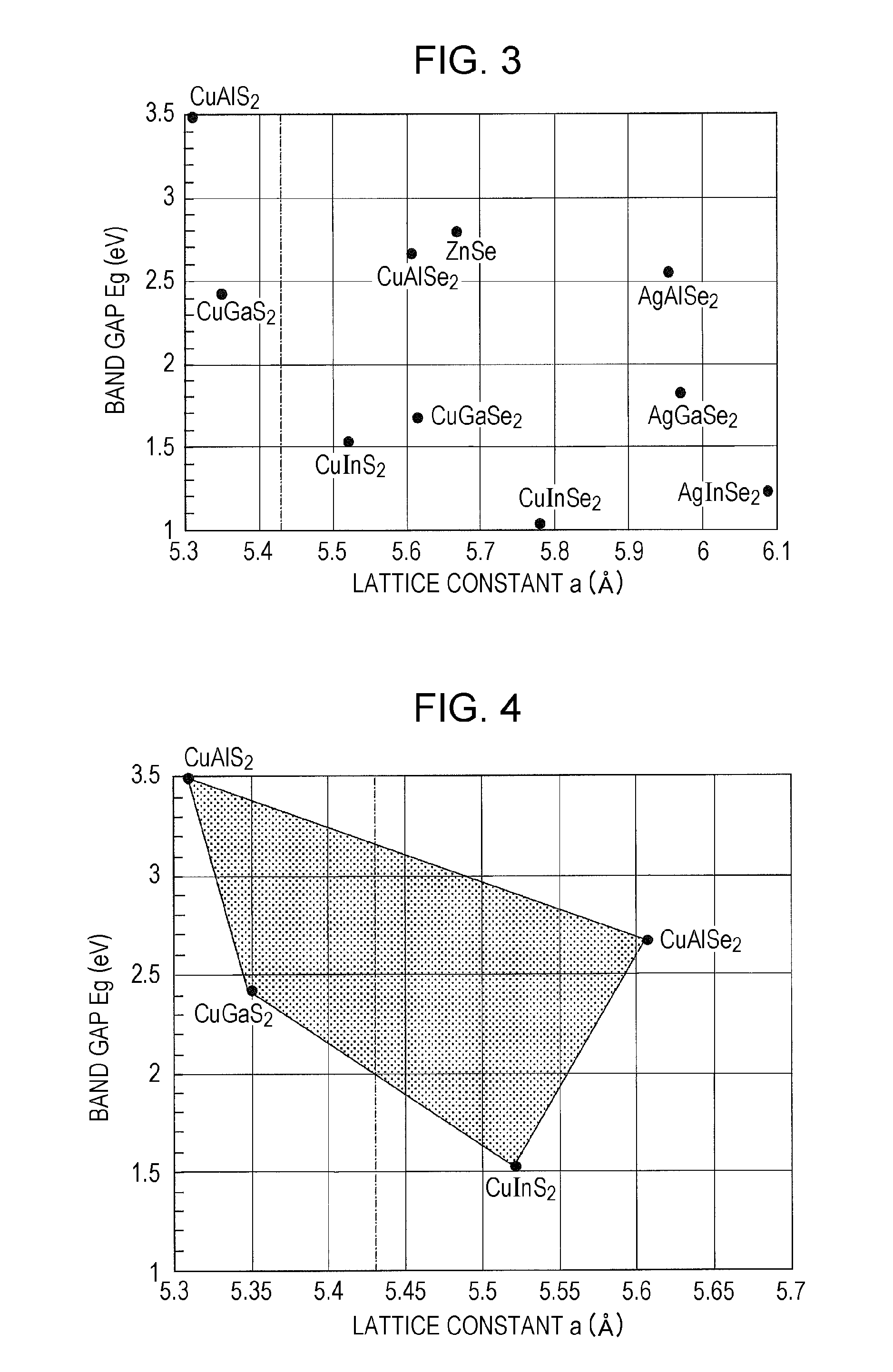Solid-state imaging device, method for producing the same, and imaging apparatus
a solid-state imaging and imaging device technology, applied in solid-state devices, color televisions, television systems, etc., can solve the problems of color artifacts, poor color reproducibility, and significant occurrence of dark currents, and achieve high sensitivity, suppress the effect of image quality reduction and high sensitivity
- Summary
- Abstract
- Description
- Claims
- Application Information
AI Technical Summary
Benefits of technology
Problems solved by technology
Method used
Image
Examples
first embodiment
1. First Embodiment
First Example of Structure of Solid-State Imaging Device
[0074]A first example of a solid-state imaging device according to a first embodiment of the present invention will be described with reference to a schematic cross-sectional view of FIG. 1.
[0075]As illustrated in FIG. 1, a first electrode layer 12 is formed in a silicon substrate 11. The first electrode layer 12 is made of, for example, an n-type silicon region formed in the silicon substrate 11. A photoelectric conversion layer 13 composed of chalcopyrite-based compound semiconductors of lattice-matched copper-aluminum-gallium-indium-sulfur-selenium (hereinafter, referred to as “CuAlGaInSSe”)-based mixed crystals is arranged on the first electrode layer 12. Copper-aluminum-gallium-indium-zinc-sulfur-selenium (hereinafter, referred to as “CuAlGaInZnSSe”)-based mixed crystals may also be used as the chalcopyrite-based compound semiconductors described above. An optically transparent second electrode layer 14 ...
second embodiment
2. Second Embodiment
Second Example of Structure of Solid-State Imaging Device
[0101]A second example of a solid-state imaging device according to a second embodiment of the present invention will be described below with reference to a schematic cross-sectional view of FIG. 12, a schematic circuit diagram of FIG. 13, the circuit being configured to read a signal, and FIG. 14 which is a band diagram at zero bias. Here, a structure in which signal readout and avalanche multiplication are allowed to occur simultaneously will be described.
[0102]As illustrated in FIGS. 12 and 13, the silicon substrate 11 is a p-type silicon substrate. The first electrode layer 12 is formed in the silicon substrate 11. The first electrode layer 12 is made of, for example, an n-type silicon layer formed in the silicon substrate 11. The photoelectric conversion layer 13 composed of lattice-matched CuAlGaInSSe-based mixed crystals is arranged on the first electrode layer 12. The photoelectric conversion layer ...
third embodiment
3. Third Embodiment
Third Example of Structure of Solid-State Imaging Device
[0116]The structure that separates light in the depth direction and the structure that simultaneously causes the separation of light and avalanche multiplication have been described above. As a third embodiment of the present invention, a simple structure in which only avalanche multiplication occurs can also be used. An exemplary structure will be described with reference to FIG. 19 which is a band diagram at zero bias and FIG. 20 which is a band diagram at a reverse bias.
[0117]As illustrated in FIGS. 19 and 20, a continuous or stepwise change in band gap results in a high degree of discontinuity. In this case, the degree of conduction-band discontinuity is higher than that of the case illustrated in FIGS. 14 to 17. It is thus possible to achieve a high avalanche multiplication gain at a low driving voltage. In this case, color separation may be performed with a color filter such as an on-chip color filter (...
PUM
 Login to View More
Login to View More Abstract
Description
Claims
Application Information
 Login to View More
Login to View More - R&D
- Intellectual Property
- Life Sciences
- Materials
- Tech Scout
- Unparalleled Data Quality
- Higher Quality Content
- 60% Fewer Hallucinations
Browse by: Latest US Patents, China's latest patents, Technical Efficacy Thesaurus, Application Domain, Technology Topic, Popular Technical Reports.
© 2025 PatSnap. All rights reserved.Legal|Privacy policy|Modern Slavery Act Transparency Statement|Sitemap|About US| Contact US: help@patsnap.com



